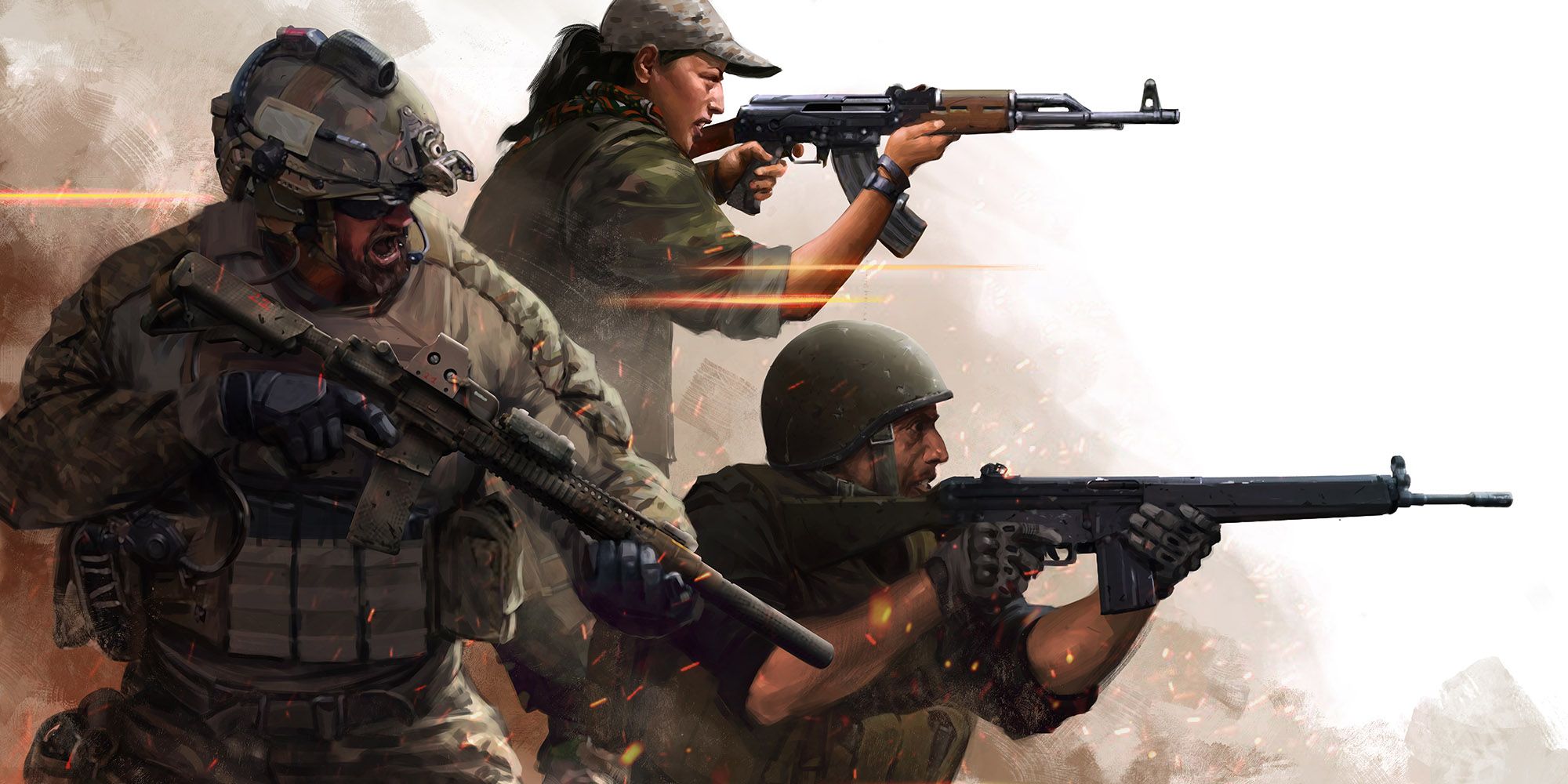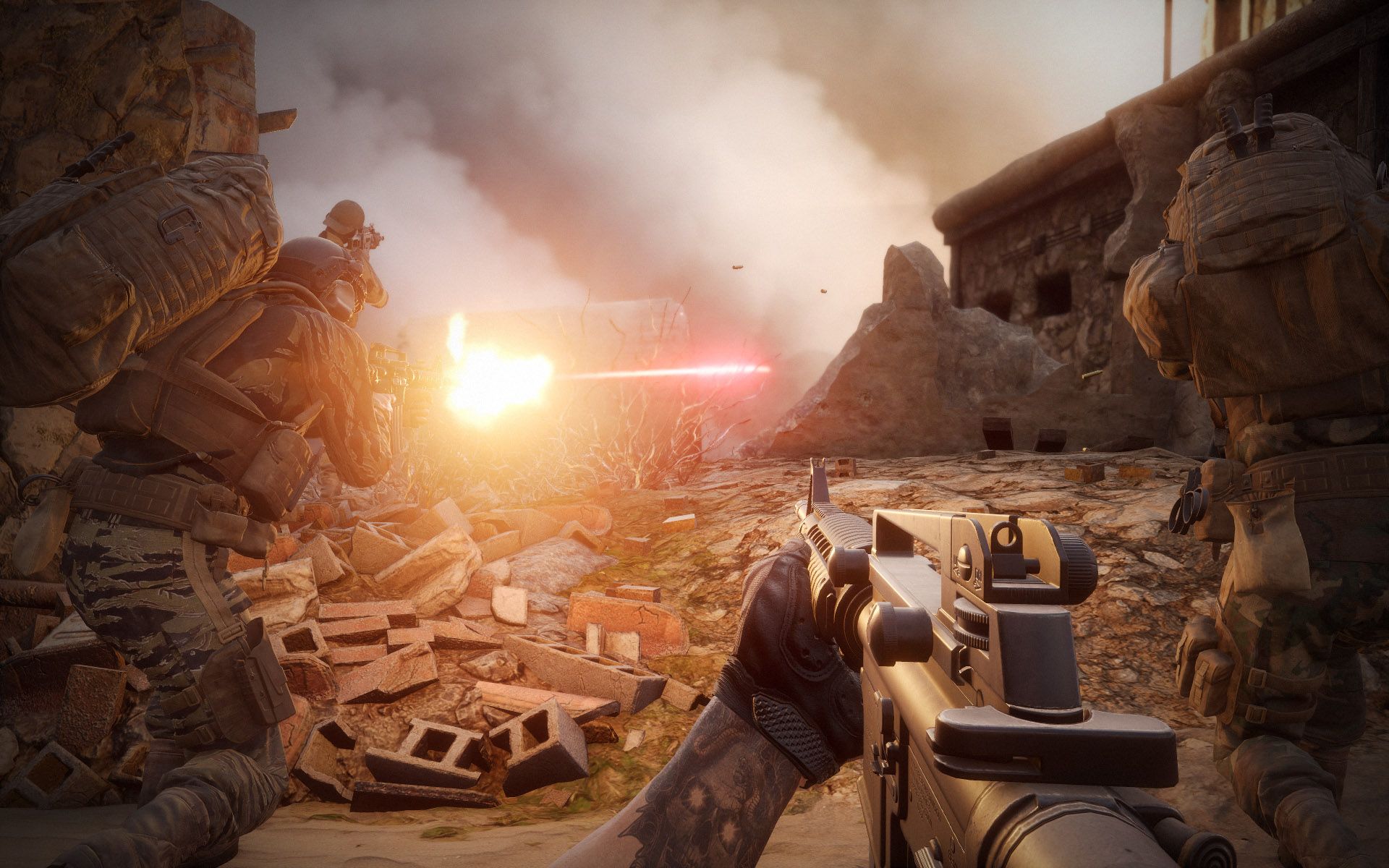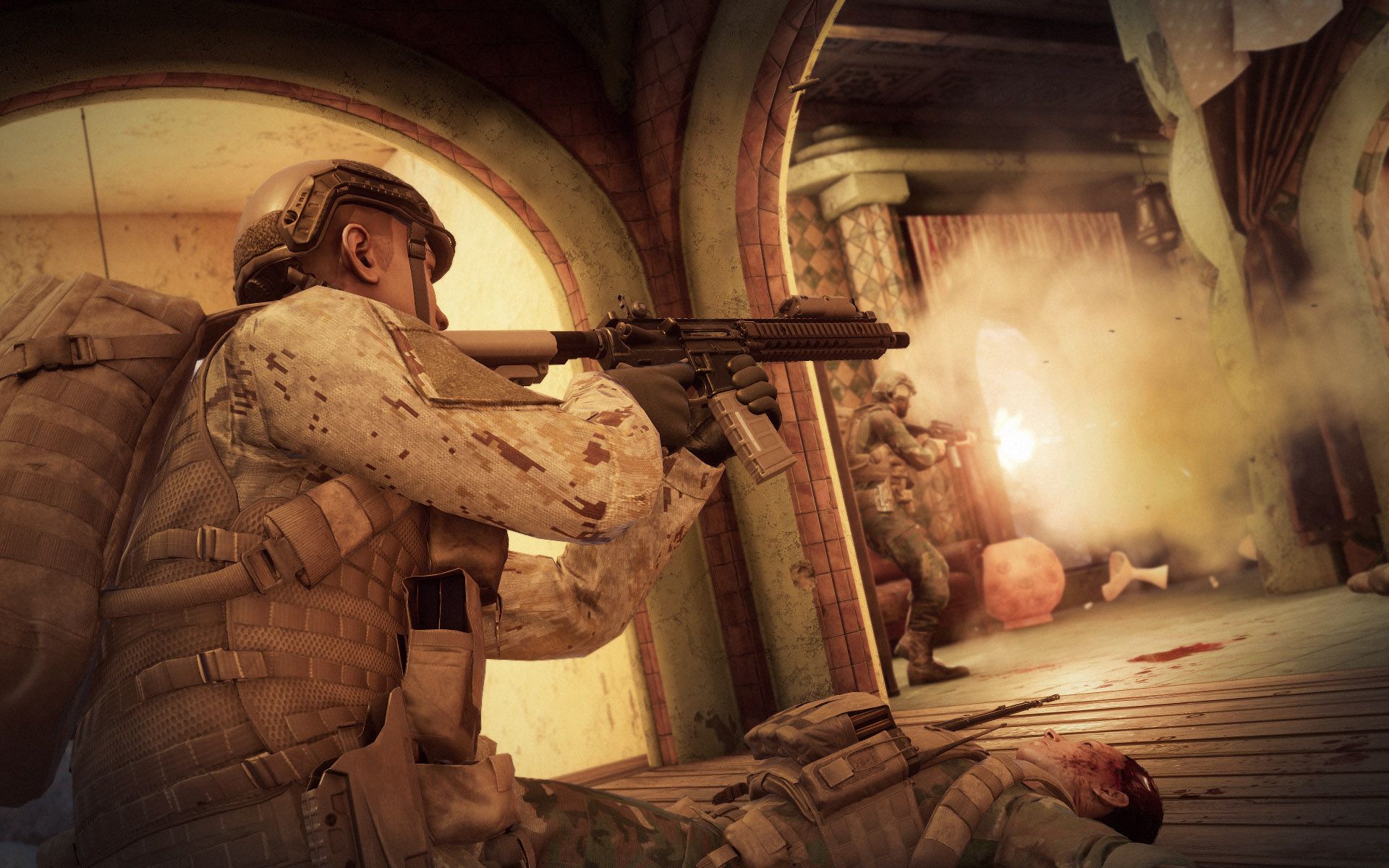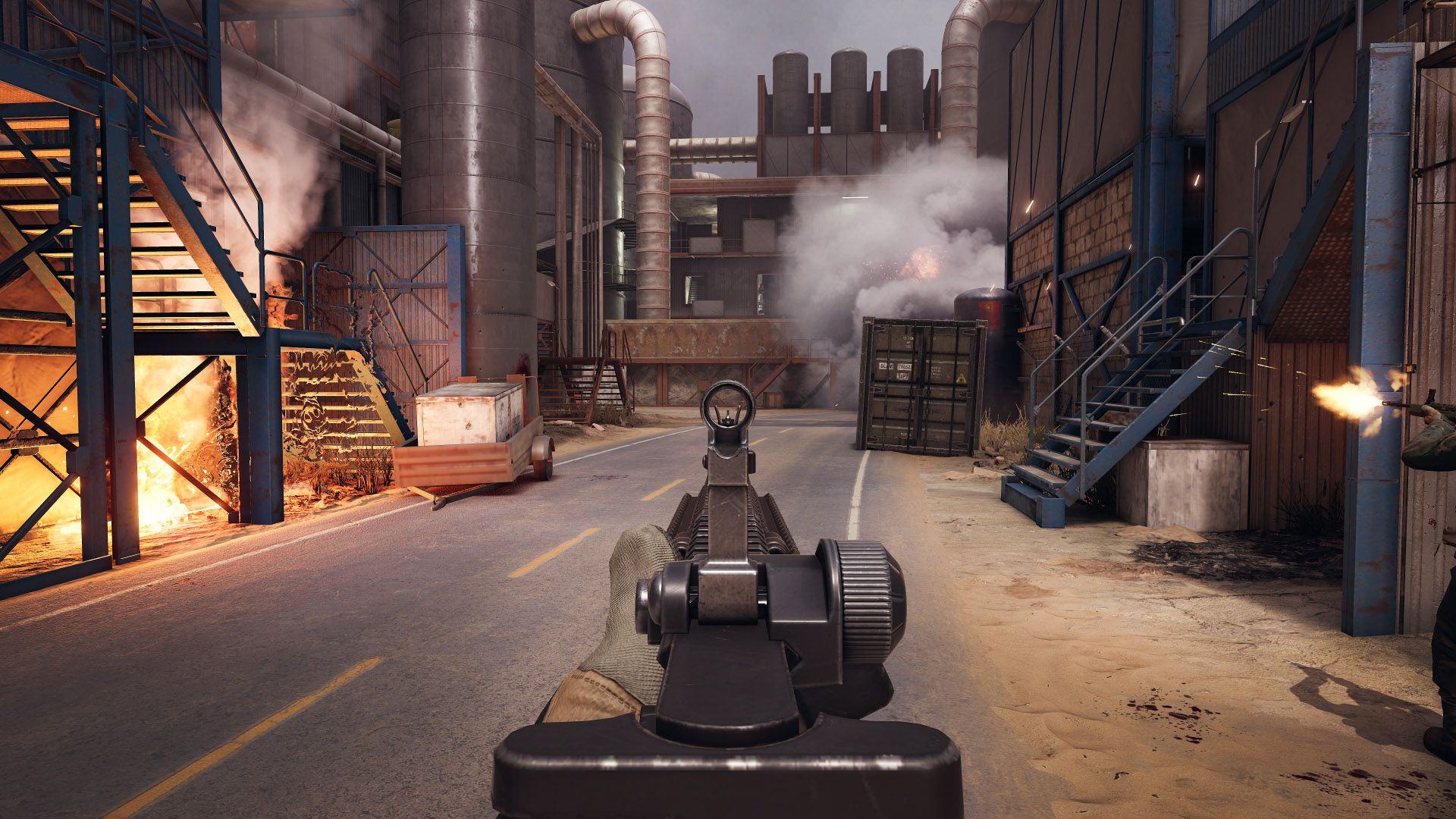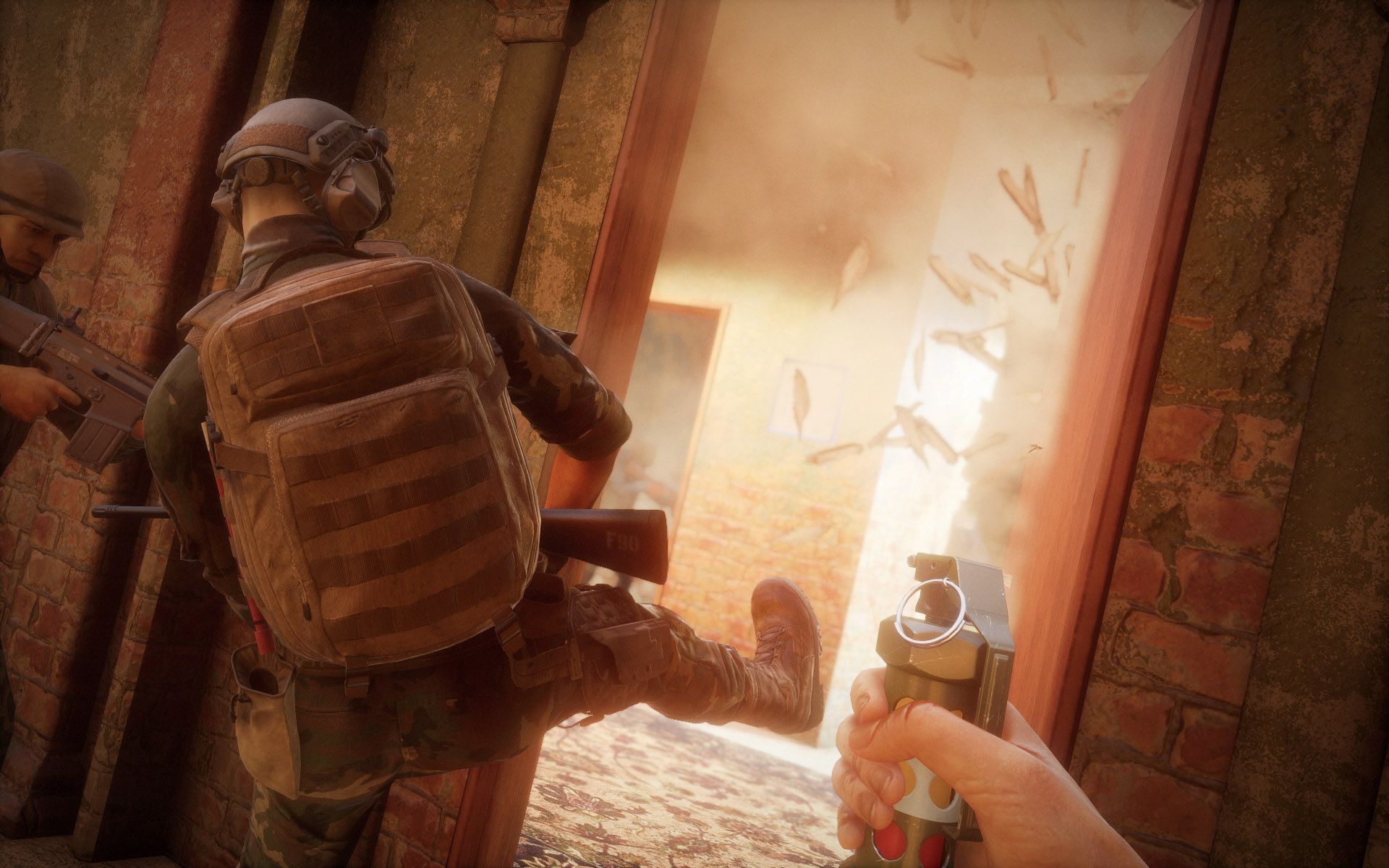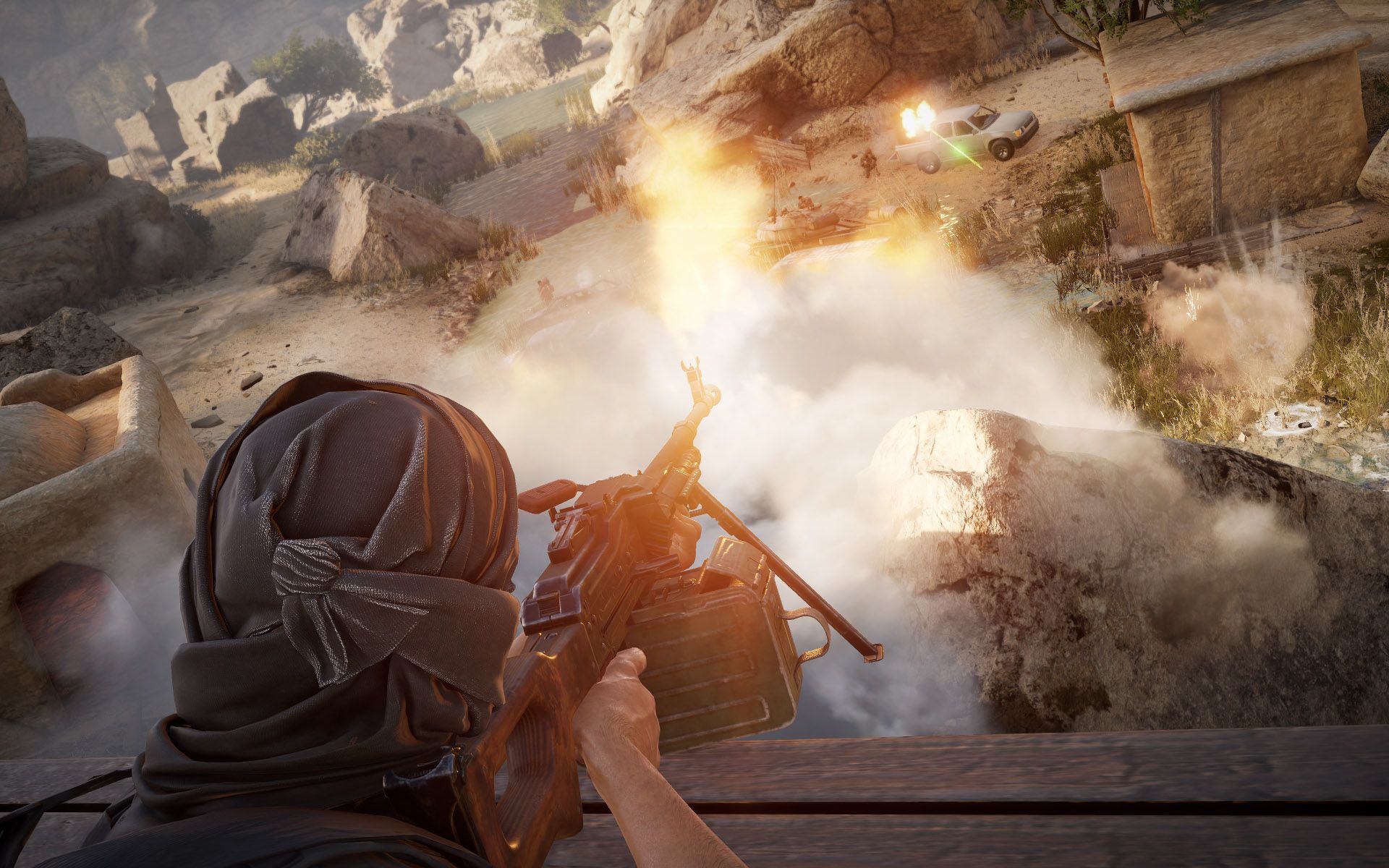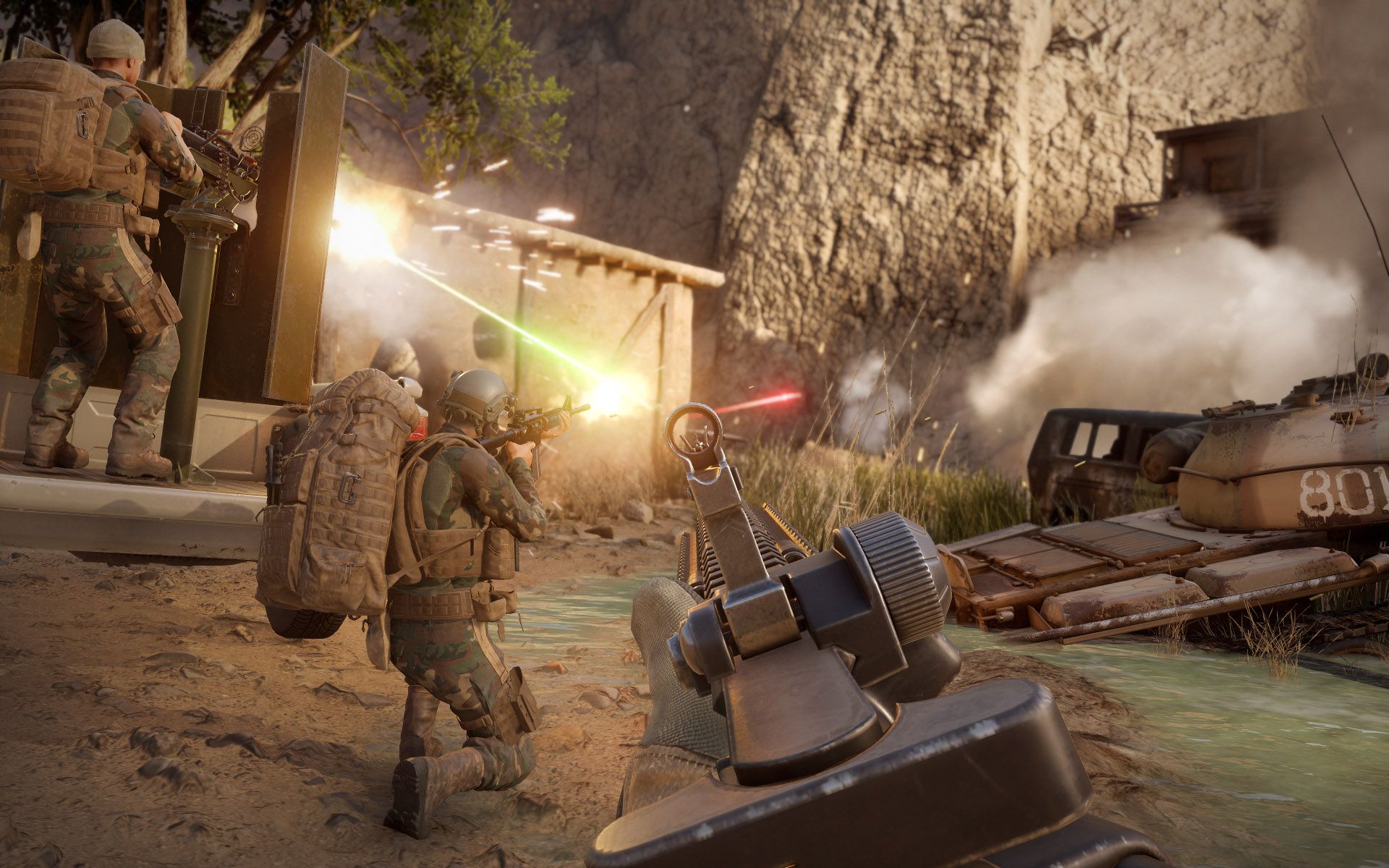After a last minute delay the full launch version of Insurgency: Sandstorm has arrived and it's been worth the wait. Of course, the delay didn't affect play time for anyone who pre-ordered the game for instant access. Still, the extra time hasn't polished the Insurgency sequel enough to make it as great as it can be.
And great is what Insurgency: Sandstorm can and likely will be with time. Like its predecessor, Sandstorm is a uniquely detailed and gritty tactical military shooter that offers so many interesting systems that other triple-A shooters could benefit from, but is held back by bugs and performance issues.
Related: A Star Wars: Clone Wars Mod is Being Made For Insurgency by Fans
Insurgency: Sandstorm can be played in either co-op or competitive team-based multiplayer and offers a unique spin on both. First, the co-op mode (called "Checkpoint") supports up to eight players or can be played solo as you capture and destroy a series of objectives across a large map. Players can be match-made into games even mid-way through to ensure there's always a healthy number of allies to assist in capturing objectives and battling AI foes.
Co-op play is surprisingly challenging, since enemies can put you down with a single well-placed shot. They can even use mounted weapons on trucks ("technicals"), use rocket launchers, and call in artillery strikes on your position as a counter-attack. There's only one difficulty setting so dying can be common, and you can only respawn once your team has captured the next objective.
All maps and modes in Insurgency: Sandstorm are objective-based, capturing and defending objective points or destroying weapon caches. And there are a few variants of each, some that strip down available gear in a faster-paced and smaller skirmish mode. Across co-op and multiplayer there are two factions, the U.S. military analog dubbed "Security" and the "Insurgents" and players can customize their look for each, even being able to save pre-sets. Additional customization options are earned through leveling up and spending in-game currency on buying camo patterns, boots, tattoos, body armor, helmets, eye wear, etc. though the game is entirely played in first-person so you only get to see your design in the game's main menu.
Both co-op and competitive multiplayer see players on both sides, each offering a different selection of weapons per class and different commander abilities. And here's where the real customization comes in. Each of the game's eight classes has its own weapons and gear options (e.g. only a Demolitions player can access all of the explosive options and rocket launchers). And it's crucial to success that players differentiate their play styles. When choosing their loadout, players (depending on the mode) get a set number of points to spend on their weapons, gear, armor, ammo and weapon attachments to keep things balanced. You can have a mega decked out, high-end assault rifle with five attachments, or maybe you can just use iron sights and have an extra grenade and better armor.
One of the best parts of Insurgency: Sandstorm's core gameplay - and something other shooters can really learn from - is how the game limits and balances a team of players by limiting how many of each class can be selected. That means there's no case of a team full of snipers or rocket launchers because depending on your team size, there can only be one or two of each. The same goes for Breachers (shotguns and SMGs), Advisors (exotic weapons), and the ever-important Commanders and Observers.
Other Shooters Can Learn From Insurgency: Sandstorm's Class-Based Gameplay
The latter two offer another neat mechanic, unique to the Insurgency formula and are the real game-changers during a given match. Where Call of Duty rewards players with over-powered arcade-esque power ups in the form of Score Streaks for that individual player, and where Battlefield lets the squad leader call in a big rocket or vehicle depending on how many points are accumulated, in Insurgency: Sandstorm a Commander can use binoculars to summon various forms of artillery and aerial strikes (smoke screen, chemical gas, helicopters, strafing runs, etc.) that are limited by availability and timed cooldowns. In order to use these however, an Observer must be present and beside the commander, forcing actual squad play and that builds these military strikes into the core gameplay loop and team dynamic. If you're on the offensive and can't get close to a fortified objective, summon a smoke screen to allow your team to make that final charge, or if there are enemies scattered in the streets, call in an attack gunship to clear out infantry.
These examples speak to how well thought out the tactical layers and combat mechanics are in Insurgency: Sandstorm, something that helps the game earn its fiercely loyal and invested player base similar to the original Insurgency.
And of course, how it caters to every type of play style. Want to lead? Play an observer or commander and call out incoming fire support and directions and timing for attacks. Are you a patient, precision sniper? Play a marksman and hide in the upper level of a building further out (unlike Battlefield games there's no bright scope glare when you're sniping so it's more viable) but note that you may be the team's only marksman. Are you a run and gunner? Play a fast-moving breacher with SMGs and shotguns. The team play is essentially to winning or losing.
Insurgency: Sandstorm's Level of Detail is Incredible
Insurgency: Sandstorm can look great on high-end PCs although even on beast-level gaming rigs, we've found settings need to be turned down to maintain high frame rates. No matter your hardware, there are all sorts of weird glitches and performance inconsistencies, especially in co-op where in some areas there's just no winning against the FPS drops.
The mechanics and modeling of the weapons, and the amount of options and attachments, are impressive. There's no triple-A shooter out there that puts the details into how weapons feel and work as Insurgency: Sandstorm does, and that's just one of the neat features this sequel brings for shooter fans.
Additional details we love include mic sound effects is awesome (toxicity is a major issue though) which make in-game voice chat sound like real in-field mic chatter, and the ability to slowly open doors versus kicking them down. Players can mount and climb objects, and lean similar to Rainbow Six Siege and PUBG though it's slower and more janky in this game. When there's chemical gas, players can use gas masks to counteract the effects. All of these features are excellently build into the game.
Insurgency Sandstorm Has A Lot of Little Issues
A few significant updates have improved Insurgency: Sandstorm throughout its extended beta, namely the crashing issue has been fixed, but it still has too many issues for a launch product. Loading into any game will commonly see weapons, hands, or weapon attachments visibly missing. They're invisible until eventually loading in. Player animations can sometimes just not work, whether it's a floating dead character in the air, or allies surfing across the map.
The game can be glitchy but not to a game-breaking point. It does get especially frustrating when shot by bullets behind cover, around a corner due to net code issues, or when a door isn't there but appears there for one player but not the other. These need to be ironed out and unfortunately hold back what's otherwise a rather great, if punishing, shooter experience that Insurgency: Sandstorm offers.
And punishing this game certainly is. There's a learning curve to mastering the weapons and coping with the insanely fast TTK (time to kill), and learning patience for respawning in. The wave-based respawn system can punish players who last longest from a previous wave and they can weirdly get less play time overall, having to wait an entire extra wave to get back in at times if they die right at the end, despite surviving the longest.
Map designs have a lot of buildings or barriers that can't be entered, but the real sticking point is how there are invisible boundaries depending on where the objective is, preventing players from using their weapons when in these areas, even if enemies are there shooting back at you. The way some of this gameplay works between objectives is immersion-breaking and the game can take a few cues from Battelfield on this front to not disrupt core gameplay, but still force the skirmish to the next point of interest.
Insurgency: Sandstorm is absolutely worth playing for tactical shooter fans who excel and enjoy team-work, because it offers more in this area than other shooters, the same way it rewards precision shooting. It's half the price of triple-A shooters and is only going to get better with time.
More: This Insurgency: Sandstorm Gameplay Trailer is Really Impressive
Insurgency: Sandstorm is now available on PC and releases on PlayStation 4 and Xbox One in 2019. Screen Rant was provided PC codes for review.

